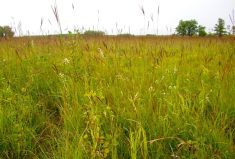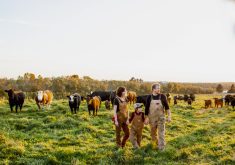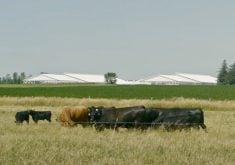Last month I wrote about the importance of variety when it comes to seeding barley for silage. When writing that article, I got thinking about the principles of making good-quality silage, particularly in relation to feed quality. What really brought this connection home to me however, was my experiences this past winter where I had the opportunity to watch several rather large silage piles slowly disappear as they were fed out. Now, I will admit that documenting the disappearance of 25,000 tonnes of silage is not the most stimulating experience; it does however, effectively highlight any management issues the operation had with harvesting, cutting, packing, covering and feeding.
Read Also

Body condition, nutrition and vaccination for brood cows
One of the remarkable events of the past century related to ranching has been the genetic evolution of brood cows….
Let’s look at some of the issues I encountered, starting with moisture. In one case, the pit consistently averaged 70 to 72 per cent moisture over the winter. In another, the silage pit contained forage that was too dry (less than 60 per cent moisture), while in another the forage was quite variable ranging from 55 to 70 per cent moisture, depending on sampling date.
In the case where the silage was at or greater than 70 per cent moisture the crop was harvested too early. Ideally we target 65 per cent moisture for cereals with acceptable ranges anywhere from 62 to 68, depending on harvest conditions. Silage that is too wet causes issues with excess effluent or seepage, as well as issues with feeding. Silage effluent is a waste of nutrients, is corrosive to equipment and a serious environmental issue. All good reasons to minimize its occurrence by targeting appropriate plant moisture levels at cutting.
From a feeding perspective, particularly in the winter, rations that have too high a moisture content can have ice crystals throughout the feed and be subject to freezing in the bunk. Both conditions can limit feed intake of newly weaned calves. Also keep in mind that silage that is too wet can undergo abnormal fermentation that results in the growth of Clostridia bacteria and other undesirable micro-organisms (i.e. Listeria).
In contrast, silage that is cut too dry (less than 60 per cent moisture) is difficult to pack and results in poor-quality silage due to an extended aerobic fermentation phase. Over-heating can be an issue and the resulting silage will have pockets of mould and/or a brown or burnt-like appearance. The most common area of the pit to see this brown or burnt-like silage is the top 12 to 24 inches of the pile, particularly if the pit was not covered. However, as I indicate above there can be pockets of such material through the silage pit if not packed properly. From a nutrition perspective, this silage has reduced energy and protein values and is not as palatable to the animal.
One of the factors that leads to poor packing is chop length. Forage ensiled with too long a chop length is hard to pack. This results in some of the issues with mould and heating discussed above. One good way to check on the efficiency of the forage harvester in terms of cut length, is to check feed bunks first thing in the morning. When silage varies in particle size, cattle will sort out the large particles (i.e. two to four inches) and leave them in the bunk. This changes formulated forage-to-concentrate ratios and diet nutrient specifications, potentially having an impact on performance. Unfortunately identifying issues with chop length when the silage is already in the pit is too late. The optimal time to check the efficiency of the forage harvester is during cutting. Most forage harvesters can be adjusted to a desired theoretical length of cut by varying cutting speeds, number and sharpness knifes, etc. Average cut lengths of one-half inch for barley and one-quarter to one-half inch for corn are fairly common. The goal is to keep particles longer than 1-1/2 inches to a minimum (less than 10 per cent of total particles) such that sorting by the cattle is minimized.
The final secret of the silage pit that I will illustrate is where the silage varies widely in moisture content from one week to the next. This variability influences the forage-to-concentrate ratio of the ration and causes headaches for bunk readers and feed truck drivers as this ratio needs to be adjusted to maintain formulated nutrient and feed additive levels. There are numerous reasons why this variability occurs, but in my experience it generally results when there are weather issues during harvest or where multiple fields/suppliers were used to fill the pit. You can’t do much about the weather but you should be able to co-ordinate cutting and delivery from multiple suppliers to optimize quality, particularly since you are paying for the feed.
I often get asked the question does it matter — “so what if there are a few pockets of burnt or mouldy silage or a bit of long forage left in the bunk?” I think the best answer to this question is to do a bit of math — a bunker silo typical of many mid-size feedlots holds 15,000 to 20,000 tonnes of silage. At $45 a tonne, this represents a feed inventory worth up to $900,000. A better question is: “Can you afford to give up five or 10 per cent of this value due to poor silage management?”
Remember, the silage pit has no secrets!

















